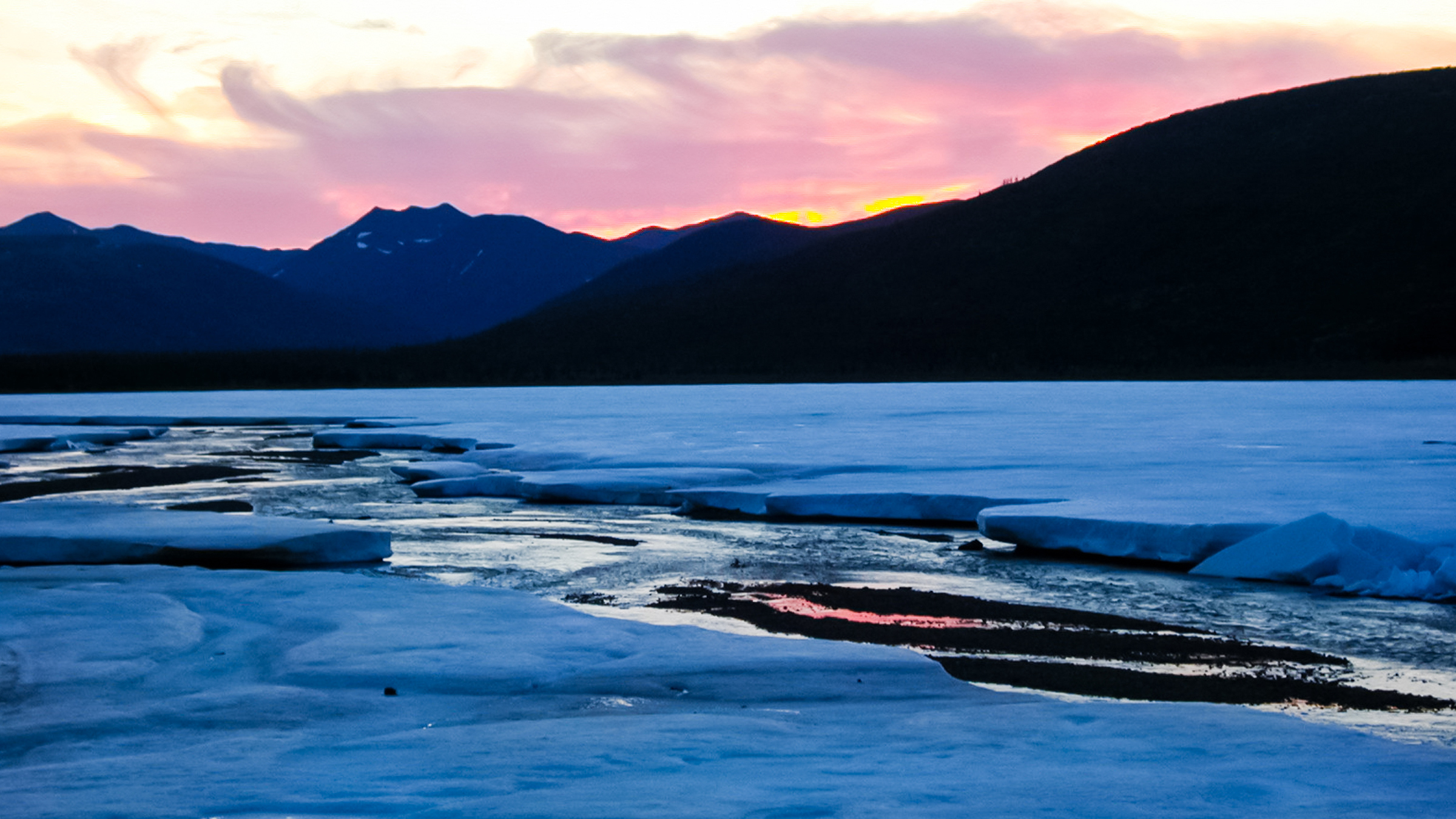Bering Land Bridge was only passable during 2 brief windows, study finds
The first people to enter the Americas may have taken the coastal route along the Bering Strait Land Bridge during these two periods.

During the last ice age, the coastal route from Asia to North America was so treacherous, humans likely crossed over only during two time windows, when environmental factors were more favorable for the long and dangerous journey, a new study finds.
The first window lasted from 24,500 to 22,000 years ago, and the other spanned from 16,400 to 14,800 years ago, according to the study, published Feb. 6 in the journal Proceedings of the National Academy of Sciences.
During these periods, winter sea ice cover and sea ice-free summers would have likely given these travelers access to a diverse marine buffet, as well as ways to safely travel along the North Pacific coast, the researchers said.
There are two main scenarios explaining how people may have first migrated to the New World. The older idea suggested that people made this journey on land when Beringia — the land bridge that once connected Asia with North America — was relatively ice-free. However, a growing body of evidence suggests that travelers used watercraft along the Pacific coasts of Asia, Beringia and North America before 15,000 years ago, when giant ice sheets would have made an overland journey extraordinarily difficult.
To see how viable the coastal route may have been for migration at different times, scientists analyzed how changes in climate over the past 45,000 years might have influenced sea ice, glacier extent, ocean current strength, and food supplies on land and sea.
Related: These first Americans vanished without a trace — but hints of them linger
The researchers developed climate models based on new data on sea ice variations and previously collected sediment samples from the Gulf of Alaska holding details about sea ice, sea surface temperatures, salinity and debris carried on ice. Their models revealed the two time windows — the first 2,500-year-long window and the second 1,600-year-long span — for year-round coastal migration, which would have enabled a favorable coastal route when the inland route was blocked.
Sign up for the Live Science daily newsletter now
Get the world’s most fascinating discoveries delivered straight to your inbox.
During those two windows, summer kelp forests would have helped keep travelers fed. Sea ice during the winter during those periods also may have supported migration; when stuck on the shoreline, sea ice can be relatively flat and stable, so ancient hunters could have walked on it and captured seals, whales and other prey to survive those winters, the researchers noted.
"Rather than being an obstacle, we suggest that sea ice may have partly facilitated movement and subsistence in this region," study first author Summer Praetorius, a paleoceanographer at the U.S. Geological Survey, in Menlo Park, California, told Live Science.
Other times during the past 45,000 years were likely less friendly to coastal migration. For instance, a giant pulse of meltwater drained into the Pacific between about 18,500 and 16,000 years ago; this huge pulse came from the edges of the giant ice sheet that once covered most of northeastern North America, and would have more than doubled the average strength of the northward ocean currents along Alaska. This, in turn, would have made boat travel heading south along the Pacific coast more difficult. The melting glaciers at this time also would have led giant icebergs to regularly calve into the ocean, posing a major hazard to coastal migration.
"At present we know more about the ice-free corridor — the timing of its opening and the timing of when it became viable for human migration," Michael Waters, an archaeologist at Texas A&M University who did not take part in this research, told Live Science. "This paper is a good step in doing the same for the coastal migration route."
In the future, the researchers would like to "look into how marine ecosystems were changing in response to past climate variations to better understand what resources were available to coastal people at different times," Praetorius said. She also wants to learn more about any brief warming spells a few centuries to millennia long that happened around Beringia, to see if they were linked to specific periods of migration.
"It is becoming clear that people entered the Americas by traversing the coast," Waters said. "They took the coastal migration hypothesis to the next level. Well done."










